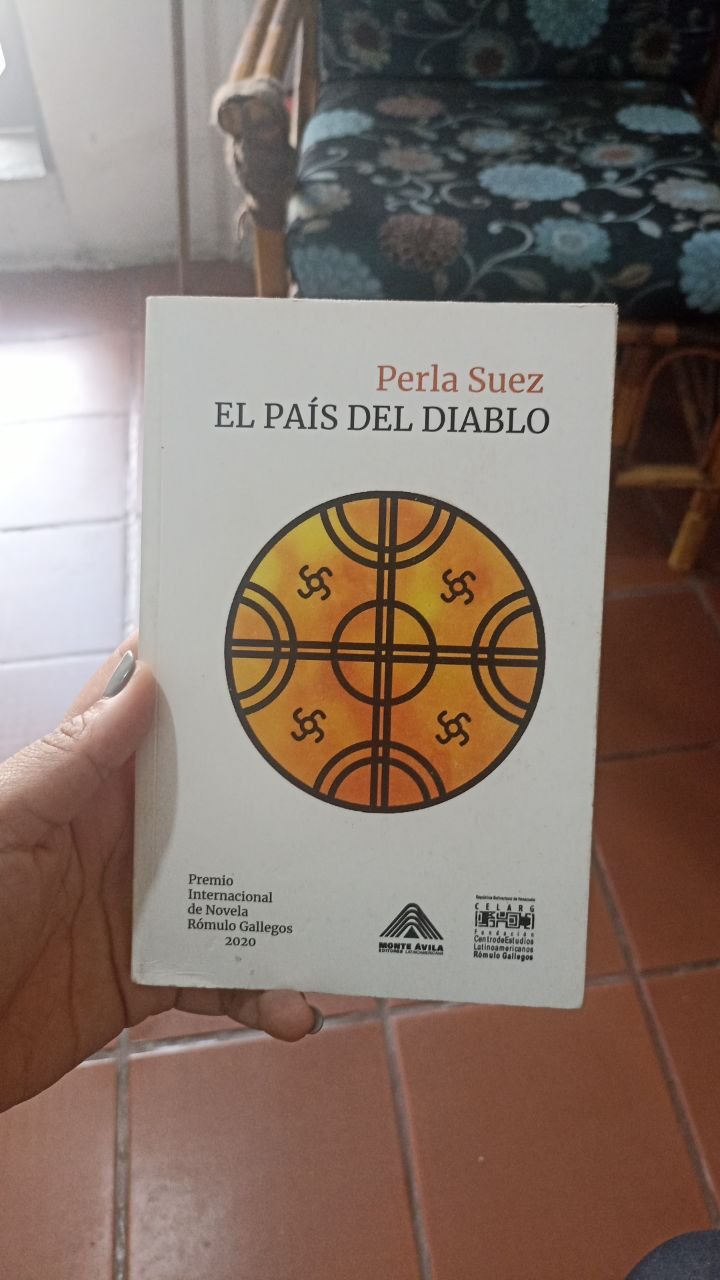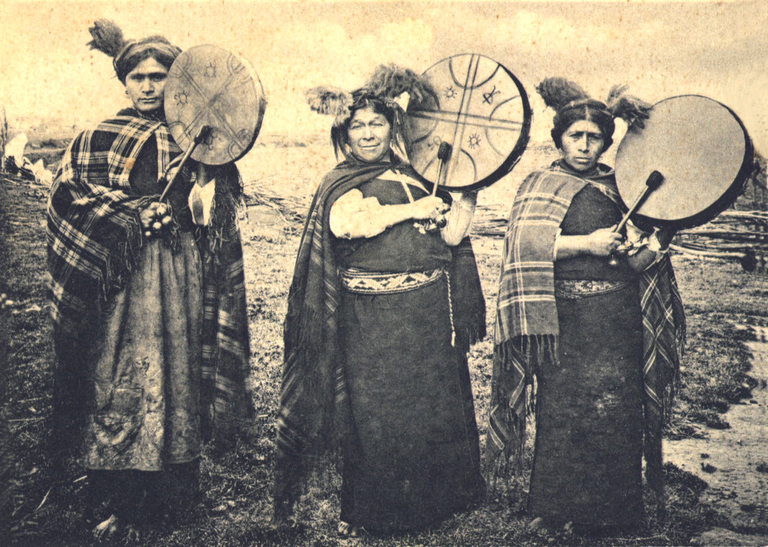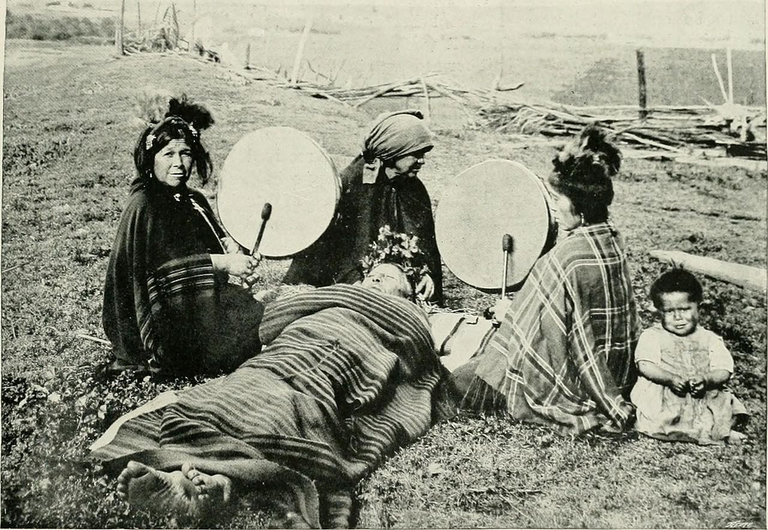
Español
La escritora argentina ganadora del premio internacional de novela Rómulo Gallegos 2020, Perla Suez, nos deleita con una obra desgarradoramente violenta, cargada de un paisaje árido y problemas bélicos que los latinoamericanos estamos acostumbrados a escuchar a lo largo de nuestra historia. Es la tercera mujer en ganar este prestigioso premio. Para el momento había demorado su otorgamiento desde el 2015 con el Tríptico de la Infamia de Pablo Montoya, alargando la entrega hasta el 2020 donde el escritor formó parte del jurado.

Es una pieza arrolladora, te sumerge en dos contextos, una visión desde la panorámica de los soldados blancos conquistadores y la óptica de una niña mestiza de 14 años llamada Lum, hija de padre blanco y madre Mapuche perteneciente a la comunidad indígena y la cual relata su ritual de paso para formar parte de los chamanes de la aldea y así poder ayudar a los suyos. Pero su destino dio un giro inesperado debido a la masacre en la que se vio envuelta su toldería, arrancando a su paso toda una historia y cultural ancestral.
Una vasta compañía de soldados ha sido lanzada al vacío. Hombres blancos e indios marchan, un ejército de pulgas adiestradas. Avanzan tan rápido que las ruedas de las carretas parecieran correr hacia atrás. Las mulas van cargadas de fusiles. Se internan en el país del diablo. Es un día crucial y el desierto es testigo. (Suez)
Mientras la protagonista está en su trance para ascender ante los espíritus, la comunidad indígena y la machi (Chaman) se ven envueltos en lo que los llevaría a la destrucción a toda su gente. La pieza es violenta hasta en lo onírico. Lum, en su viaje astral, recuerda como fue decapitada su madre, esa memoria es lo que hace odiar a su sangre blanca, el dolor de una perdida, tratar de unir lo que se mutiló. Este capítulo es una violencia inusitada, una niña percibe como asesinan a su madre, con dolor ella intenta volverla a la vida, pero el fracaso la lleva a sentirse sola, a ser una mujer indígena más con una historia de violencia de género, (en la que el hombre utiliza siempre a la mujer como símbolo de poder), mediante la violación y la matanza de mujeres inocentes.
La violencia y la morbosidad no solo está presente en esta era digital, Suez nos permite reconocer que el humano ha sido así a lo largo del tiempo. El comando de soldados está formado por el teniente, Carranza, un fotógrafo y hasta un indígena que fue forzado a formar parte de la masacre. Deus que es el fotógrafo de los soldados, es quien busca guardar la imagen visual de la conquista y entre eso hace el registro de la muerte de la machi, nos relata cómo Carranza apuñala el pecho de la sabia con el cuchillo...

Hágalo lentamente porque debo exponerla por algunos segundos. El sargento se inclina y clava el cuchillo despacio en el pecho de la mujer, lo deja allí y se queda en pose sonriente hasta que el fotógrafo le dice que lo saque. (Suez)
La autora nos da la posibilidad de imaginar cinematográficamente el texto, el país del diablo es una obra literaria descriptiva, que nos va llenando de imágenes ensordecedoras y fantasmales, pero a su vez también nos regala la posibilidad de vivir una venganza. Lum, recibe fuerza de los espíritus ancestrales de su comunidad, y promete vengarlos a todos, entonces nos lleva con ella a una cacería que no olvidaremos, sacando esa fiereza femenina, cual leona de manada defendiendo a los suyos.
Se llena las manos de cenizas y se frota la cara para teñirse de gris. Es lo que hacen los chamanes para adquirir el resplandor de los espectros, para ser uno de ellos (Suez)
Según la Real Academia Española, la venganza es la satisfacción que se toma del agravio, castigo, pena. Y es precisamente por la emoción que nos arrastra Lum, querer vengar tanta sangre indígena regada. Es increíble imaginar lo habilidosa de la niña, muy inteligentemente, fue asesinando a uno por uno, ella, una niña de catorce años, contra hombres, soldados. Mientras los asechaba, podía, sentir la furia, mató a uno por uno, hasta lograr atraparla, siendo víctima presa de los hombres. Pero hay un punto de conexión con Ancatril, el indígena soldado, él es quien deja que la niña retome su cultrum (Tambor ceremonial utilizado por la cultura Mapuche) para presenciar como despide a unos niños fantasmales blancos. Con esto, Lum logra ablandar de alguna manera el corazón del viejo indígena, haciéndole recordar sus raíces ancestrales y sintiendo, tal vez, aberración por todo lo ocurrido.
Suez, nos deja un final abierto, digno de una película, donde no sabes si están viviendo un bucle paranormal o simplemente fue un sueño, deja al lector inmiscuirse y entrelazarse con la historia, para finalmente, tomar libremente su final. La obra está escrita en tres grandes capítulos y un epilogo, nos da un paseo por el sufrimiento, muerte y la resurrección, lo curioso es el enlace que puedes hacer con la vida de Jesús, pero vista desde la perspectiva indígena. El texto incluye un glosario para que el lector pueda profundizar y entender acerca de los términos de los Mapuches.

Suez nos da su versión, esa versión que al inicio aclara que es ficción y que si se encuentra con algún parecido a la realidad es mera coincidencia, haciendo un guiño a las advertencias que aparece en muchas películas de cine. ¿Será que estamos ante una proyección cinematográfica literaria? Cruel, que sobre arruga el alma, ante un western moderno, como diría la autora.

English
The Argentine writer and winner of the 2020 Romulo Gallegos International Novel Prize, Perla Suez, delights us with a heartbreakingly violent work, charged with an arid landscape and war issues that we Latin Americans are accustomed to hearing about throughout our history. She is the third woman to win this prestigious award. For the moment it had delayed its award since 2015 with Pablo Montoya's Tríptico de la Infamia, extending the delivery until 2020 where the writer was part of the jury.

It is a sweeping piece, immerses you in two contexts, a vision from the panoramic view of the conquering white soldiers and the perspective of a 14 year old mestizo girl named Lum, daughter of a white father and a Mapuche mother belonging to the indigenous community and who tells of her ritual of passage to become part of the village shamans and thus be able to help her own. But her destiny took an unexpected turn due to the massacre in which her toldería was involved, uprooting an entire ancestral history and culture in its wake.
A vast company of soldiers has been thrown into the void. White men and Indians march, an army of trained fleas. They advance so fast that the wheels of the wagons seem to run backwards. The mules are loaded with rifles. They are entering the devil's country. It is a crucial day and the desert is their witness.
While the protagonist is in her trance to ascend before the spirits, the indigenous community and the machi (Shaman) are involved in what would lead to the destruction of all their people. The piece is violent even in the dreamlike. Lum, in his astral journey, remembers how his mother was decapitated, that memory is what makes him hate his white blood, the pain of a loss, trying to unite what was mutilated. This chapter is an unusual violence, a girl perceives how her mother is murdered, with pain she tries to bring her back to life, but the failure leads her to feel alone, to be one more indigenous woman with a history of gender violence, (in which men always use women as a symbol of power), through rape and the killing of innocent women.
Violence and morbidity is not only present in this digital era, Suez allows us to recognize that humans have been like this throughout time. The commando of soldiers is formed by the lieutenant, Carranza, a photographer and even an Indian who was forced to be part of the massacre. Deus, who is the photographer of the soldiers, is the one who seeks to keep the visual image of the conquest and between that makes the record of the death of the machi, tells us how Carranza stabs the chest of the sage with the knife...

Do it slowly because I must expose her for a few seconds. The sergeant bends down and slowly plunges the knife into the woman's chest, leaves it there and stays in a smiling pose until the photographer tells him to take it out.
The author gives us the possibility of imagining the text cinematographically, the devil's country is a descriptive literary work, which fills us with deafening and ghostly images, but at the same time also gives us the possibility of living a revenge. Lum receives strength from the ancestral spirits of her community, and promises to avenge them all, then takes us with her on a hunt that we will not forget, bringing out that feminine fierceness, like a lioness of the herd defending her own. She fills her hands with ashes and rubs her face to dye it gray. This is what shamans do to acquire the glow of the specters, to become one of them (Suez).
According to the Royal Spanish Academy, revenge is the satisfaction taken from a grievance, punishment, penalty. And it is precisely because of the emotion that drags us Lum, wanting to avenge so much indigenous blood watered. It is incredible to imagine how skillful the girl was, very cleverly, she was killing one by one, she, a fourteen year old girl, against men, soldiers. As she stalked them, she could feel the fury, she killed one by one, until she was caught, being the victim, prey of the men. But there is a point of connection with Ancatril, the indigenous soldier, he is the one who lets the girl retake her cultrum (ceremonial drum used by the Mapuche culture) to witness how she sends away some white ghostly children. With this, Lum somehow manages to soften the heart of the old Indian, making him remember his ancestral roots and feeling, perhaps, aberration for all that has happened.
Suez, leaves us an open ending, worthy of a movie, where you do not know if they are living a paranormal loop or it was just a dream, lets the reader interfere and intertwine with the story, to finally, freely take its end. The work is written in three major chapters and an epilogue, gives us a walk through the suffering, death and resurrection, the curious thing is the link you can make with the life of Jesus, but seen from the indigenous perspective. The text includes a glossary so that the reader can deepen and understand about the terms of the Mapuche.

Suez gives us his version, that version that at the beginning clarifies that it is fiction and that if there is any resemblance to reality it is mere coincidence, winking at the warnings that appear in many films. Could it be that we are facing a literary film projection? Cruel, that over wrinkles the soul, a modern western, as the author would say.
Congratulations @alexeyha86! You have completed the following achievement on the Hive blockchain And have been rewarded with New badge(s)
Your next target is to reach 200 replies.
You can view your badges on your board and compare yourself to others in the Ranking
If you no longer want to receive notifications, reply to this comment with the word
STOPCheck out our last posts:
Support the HiveBuzz project. Vote for our proposal!
The rewards earned on this comment will go directly to the people sharing the post on Twitter as long as they are registered with @poshtoken. Sign up at https://hiveposh.com.
Muchas gracias @mayvileros que bueno contar con su apoyo. 💗☺️